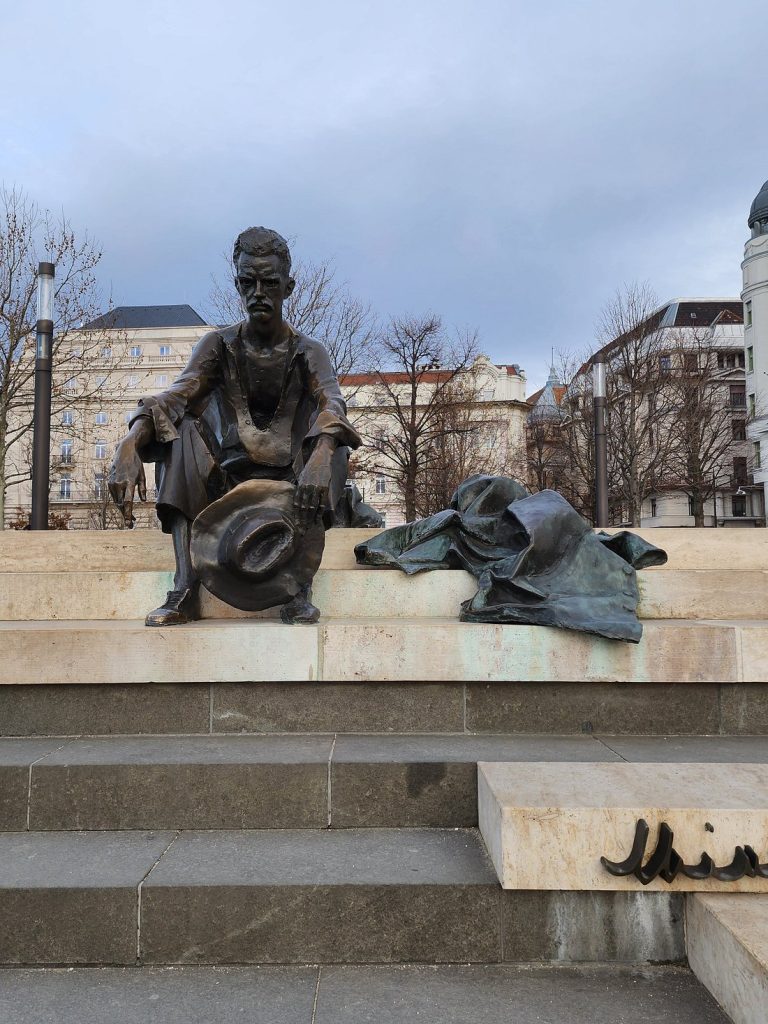Attila József Statue: Budapest’s Literary Tribute
Pay homage to a literary luminary at the Attila József Statue, a striking monument commemorating the profound impact of Hungarian poet Attila József. Situated in the heart of Budapest, this statue serves as a testament to poetry’s enduring influence on culture and society.
Historical Significance and Location
A Tribute to a Literary Giant
The Attila József Statue stands prominently near the iconic Parliament Building along the Danube River, offering visitors a picturesque view of the riverbanks and the city’s architectural splendor. This location is fitting for a poet whose work vividly depicted the struggles and beauty of everyday life in Hungary.
Attila József: The Poet’s Life and Legacy
Attila József, born in 1905, is one of Hungary’s most celebrated poets. His life was marked by personal hardships, including poverty and mental illness, which profoundly influenced his poetry. Despite his tragic death at the age of 32, József’s work has left an indelible mark on Hungarian literature, exploring themes of social justice, love, and existential angst. His poetry resonates with readers today, reflecting the universal human experience.
Design and Symbolism
The Artistic Representation
The statue, unveiled in 2005 to commemorate the 100th anniversary of József’s birth, was crafted by Hungarian sculptor László Marton. It features a contemplative József sitting on the steps, gazing thoughtfully across the Danube. This artistic choice captures the reflective nature of his poetry and his connection to the city of Budapest.
Symbolism and Cultural Heritage
The Attila József Statue is not merely a physical representation of the poet; it symbolizes the power of words and their ability to transcend time and place. The statue’s location by the Danube is also symbolic, representing the flow of thoughts and ideas that continue to shape Hungarian culture and identity. It stands as a reminder of a single poet’s voice’s profound impact on a nation’s cultural heritage.
Visiting the Statue
What to Expect
Visitors to the Attila József Statue can experience a moment of quiet reflection, surrounded by the beauty of Budapest’s riverside. The statue invites you to sit alongside the poet and contemplate the words that have moved generations. It’s a place for introspection, inspiration, and a deeper appreciation of Hungary’s rich literary tradition.
Nearby Attractions
While visiting the Attila József Statue, take the opportunity to explore nearby attractions. The Hungarian Parliament Building, one of Budapest’s most iconic landmarks, offers guided tours that delve into Hungary’s history and political significance. The Shoes on the Danube Bank memorial, a poignant tribute to the Jewish victims of World War II, is also within walking distance. Additionally, the area is filled with charming cafes and restaurants where you can enjoy local cuisine while soaking in the literary atmosphere.
A Symbol of Literary Legacy
The Enduring Influence of Attila József
The Attila József Statue is more than a tribute to an individual poet; it is a celebration of literature’s enduring influence on society. József’s poetry, marked by its emotional depth and social commentary, inspires and challenges readers. His work has been translated into numerous languages, ensuring his voice reaches a global audience.
Celebrating Hungarian Literary Heritage
For those drawn to poetry and literary heritage, the Attila József Statue offers a meaningful encounter with Hungary’s cultural legacy. It stands as a testament to the power of artistic expression and its ability to capture the human experience. Whether you are a literature enthusiast, a student of history, or simply someone seeking inspiration, this monument provides a profound connection to the world of words.
Practical Information
How to Get There
The Attila József Statue is conveniently located near the Hungarian Parliament Building, making it easily accessible by public transportation. The nearest metro station is Kossuth Lajos tér on Line M2 (the red line), just a short walk from the statue. Several bus and tram lines also serve the area, ensuring visitors can reach the site from various parts of the city.
Best Time to Visit
Budapest is a year-round destination, but the best time to visit the Attila József Statue is spring and autumn. The weather is pleasant, and the surrounding parks and gardens bloom, enhancing the overall experience. Visiting early or late afternoon provides a tranquil atmosphere, perfect for reflecting on József’s literary contributions.
Conclusion
The Attila József Statue in Budapest is a profound symbol of Hungary’s literary heritage and the enduring power of poetry. Its presence by the Danube River not only commemorates the life and work of one of Hungary’s greatest poets but also serves as a reminder of the lasting impact of words on culture and society. When visiting Budapest, include this significant monument in your itinerary for a deeper appreciation of the city’s rich artistic and literary legacy.
